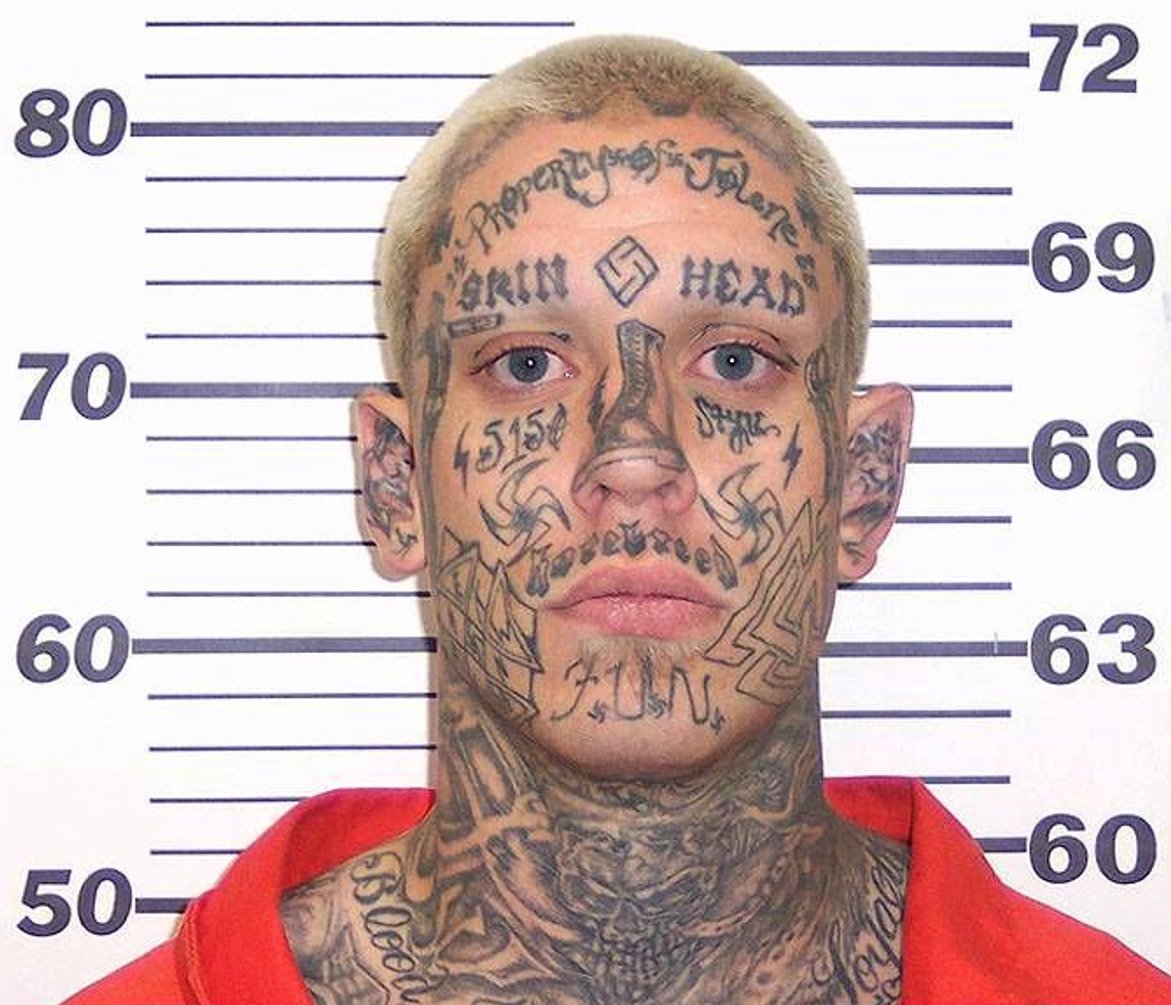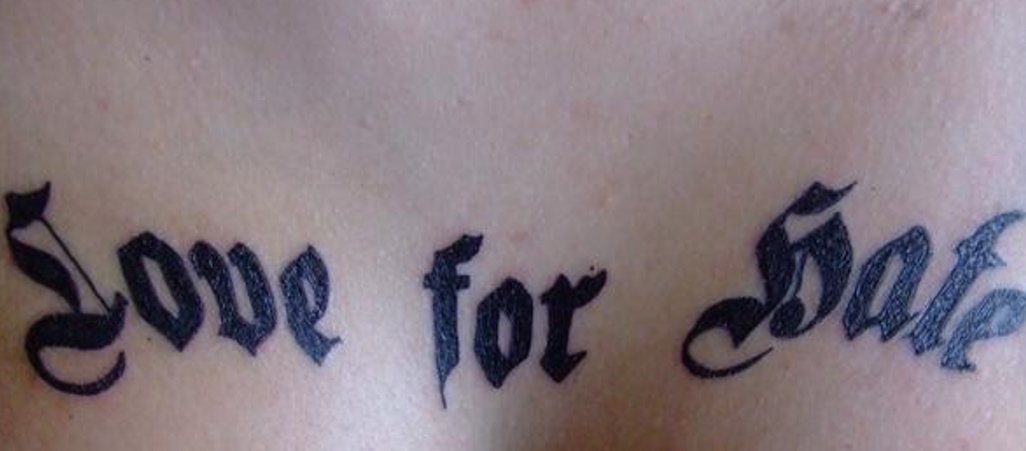Here's a thread with some random facts about white supremacist tattoos, a very common means of expression of white supremacy. If you put it on your body, it's probably a belief you hold dear. 

It's most shocking/sensational when white supremacists have tattoos on their foreheads, or all over their face. 







They don't start that way, of course. A lot of white supremacists accrue tattoos over time, some eventually reaching a "point of no return" where they couldn't hide them even if they wanted to. This is Curtis Allgier in 2001, 2003, 2006. 





After the film American History X came out, with actor Ed Norton's character sporting a prominent swastika on his left breast, many white supremacists rushed to emulate him. To this day, it remains a popular spot for swastika tattoos. 







White supremacist tattoos sometimes have regional variations. For example, in the 2000s (and perhaps still), large outline tattoos were popular with members of California white power/peckerwood gangs. 





Some female white supremacists will get numerous, large, and/or blatant white supremacists tattoos, but this is less common than with male white supremacists. 



More common is for female white supremacists to get smaller and/or less obtrusive tattoos--perhaps on a toe or on the back. Some female white supremacists prefer white supremacist clothing or jewelry to tattoos--such items can easily be removed. 







Male white supremacists may often get skull tattoos, in part because they can cover them up by letting their hair grow--although they have to be optimistic about future baldness. 





White supremacist prison gang members start as prospects; when they become full members, they can get group tattoos or "patches." If they break rules or try to leave the gang, though, the gang may remove the tattoo with a knife, blowtorch or sander belt. 







Many white supremacists like runic writing--replacing the Roman alphabet with runic characters. Here we see "skinhead," "hate," and "white power." 







Some white supremacist tattoos are very blatant, but some choose to be subtle or cryptic. Can you spot the KKK? How about the 14/88? 





Of course, if a tattoo is on the inside of your lip, you don't have to be subtle--you have control over when it is displayed. 







• • •
Missing some Tweet in this thread? You can try to
force a refresh


















